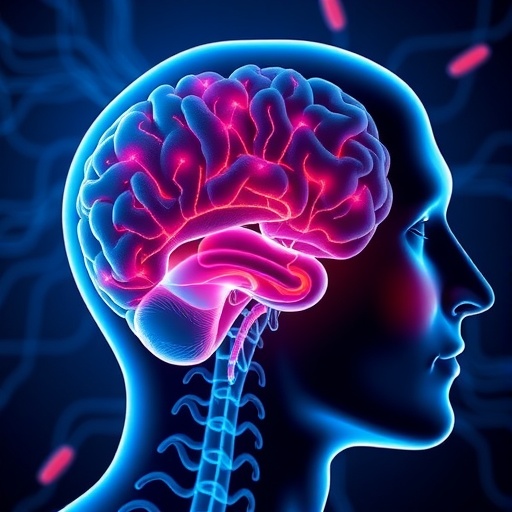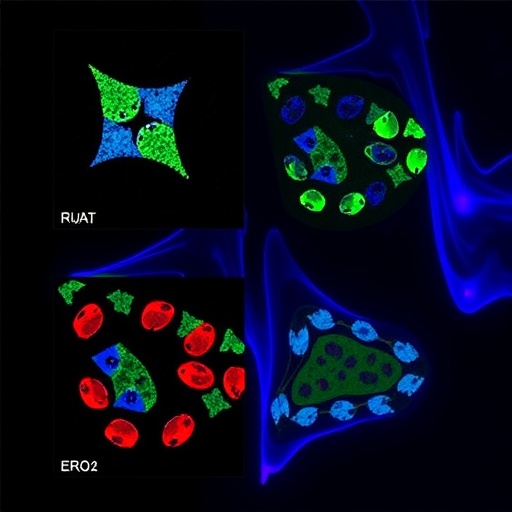In the ever-evolving landscape of neurodegenerative disease research, a compelling study has recently surfaced focusing on the intricate relationship between peripheral inflammation and its influence on cognitive and symptomatic outcomes in Parkinson’s disease (PD). The corrected article, authored by He, P., Li, Y., Huang, Z., and colleagues, sheds new light on how systemic inflammatory processes may variably affect the progression and manifestation of PD symptoms over time. This nuanced exploration promises to refine our understanding of Parkinson’s pathophysiology, underscoring the significance of inflammation beyond the central nervous system.
Parkinson’s disease, characterized primarily by motor dysfunctions such as tremors, bradykinesia, and rigidity, also presents a broad spectrum of non-motor symptoms, including cognitive decline and mood disorders. These symptoms contribute substantially to the disease burden. The study delves deeply into the potential modulatory role of peripheral inflammatory markers, which historically have been linked to numerous chronic conditions but whose exact impact in PD has remained elusive. The authors employ both longitudinal and cross-sectional analytical techniques, enabling them to track inflammatory effects over different time scales and symptom domains.
A critical takeaway from this research lies in its pioneering approach to dissect peripheral inflammation’s heterogenous impact on various clinical outcomes in PD. Unlike previous studies that often treated inflammation as a monolithic factor, this investigation reveals a more complex, variable influence contingent upon individual patient profiles, disease stages, and symptom severity. Such variability challenges conventional treatment paradigms and highlights the necessity for personalized therapeutic strategies targeting inflammatory pathways.
The researchers utilized a robust cohort comprising PD patients at varied stages of illness alongside matched controls, collecting longitudinal data that included inflammatory biomarkers such as cytokine levels measured in plasma and cerebrospinal fluid. Cognitive assessments were rigorously standardized, integrating tools sensitive enough to detect subtle changes in domains like executive function, memory, and attention. Symptom progression was monitored through validated scales, facilitating a comprehensive overview of Parkinsonian symptomatology.
One of the most striking findings reported was the differential association between peripheral inflammation and specific cognitive domains. Elevated levels of pro-inflammatory cytokines correlated strongly with declines in executive function and working memory but less so with visuospatial abilities. This selective vulnerability hints at underlying neuroimmune mechanisms that may preferentially affect certain neuronal circuits, possibly through the disruption of blood-brain barrier integrity or the activation of microglial cells within critical brain regions.
Moreover, the study elaborated on the temporal dynamics of these inflammatory effects. In the cross-sectional analysis, high peripheral inflammation was associated with more severe motor symptoms and poorer cognitive performance at baseline. However, the longitudinal data revealed that inflammation predicted cognitive decline trajectories differently among individuals, suggesting that inflammation’s impact may amplify or attenuate depending on disease progression and patient-specific inflammatory profiles.
An intriguing aspect of this research is the discussion on symptomatic heterogeneity in Parkinson’s disease. The authors challenge the notion of a uniform disease course by demonstrating how inflammation interacts with genetic and environmental factors to create diverse symptomatic landscapes. This interplay underscores the potential for biomarkers like cytokines to stratify patients and tailor interventions aimed at modulating immune responses to slow or alter disease progression.
From a mechanistic perspective, the authors explore the pathophysiological pathways linking peripheral inflammation to neurodegeneration in PD. Chronic systemic inflammation is postulated to facilitate neuroinflammatory cascades that exacerbate alpha-synuclein aggregation, a hallmark of Parkinson’s pathology. Additionally, peripheral immune activation may promote oxidative stress and mitochondrial dysfunction, further driving neuronal loss. These insights broaden the conceptual framework of PD as not solely a neurocentric disorder but a multisystem disease influenced by systemic immune status.
The corrected article also addresses methodological limitations encountered in previous studies, such as sample size constraints and inconsistent biomarker measurement techniques. The current study’s rigorous approach, with its well-characterized cohorts and comprehensive longitudinal data, allows for more definitive conclusions about causality and temporal relationships between inflammation and clinical outcomes. This methodological robustness strengthens the argument for incorporating peripheral inflammatory markers into routine clinical assessment of PD.
Clinically, these findings open avenues for novel therapeutic targets. Anti-inflammatory agents, some of which are already FDA-approved for other conditions, may be repurposed as adjunct treatments for PD to mitigate cognitive decline and improve quality of life. The variability in inflammatory impact observed demands a precision medicine approach, wherein patient-specific inflammatory profiles guide the selection and timing of such interventions.
Another aspect highlighted by the study is the potential predictive value of inflammatory biomarkers. Early identification of patients at risk for rapid cognitive decline or severe motor worsening could revolutionize disease management. For instance, routine screening of peripheral cytokine levels may become integral to personalized monitoring protocols, enabling timely adjustments in treatment regimens aimed at curbing inflammation-driven neurodegeneration.
In summary, this landmark study by He and colleagues significantly advances our grasp of how peripheral inflammation serves as a critical, yet complex, modulator of Parkinson’s disease progression. Its insights not only refine the current pathophysiological model of PD but also pave the way for innovative diagnostic and therapeutic strategies. As the scientific community continues to unravel the immune system’s role in neurodegeneration, such detailed investigations will be indispensable for translating research breakthroughs into tangible clinical benefits.
The article’s publication in a leading Parkinson’s-focused journal reflects the growing recognition of inflammation’s importance across neurodegenerative diseases. Its findings invite a paradigm shift from viewing Parkinson’s as solely a CNS disorder to acknowledging the systemic interactions shaping its course. This integrated understanding impels future research to expand beyond neural mechanisms to encompass peripheral immune processes.
Ultimately, the multifaceted relationship between peripheral inflammation and Parkinson’s symptoms exemplifies the complexity inherent in neurodegenerative conditions. By embracing this complexity, researchers and clinicians may better design interventions that address not just the symptoms but the underlying mechanisms driving disease heterogeneity. This comprehensive approach holds profound promise for improving patient outcomes and mitigating the heavy societal burden of Parkinson’s disease.
Subject of Research: The variable impact of peripheral inflammation on cognitive decline and symptomatic outcomes in Parkinson’s disease analyzed through longitudinal and cross-sectional studies.
Article Title: Author Correction: Peripheral inflammation’s variable impact on cognitive and symptomatic outcomes in Parkinson’s disease: a longitudinal and cross-sectional analysis.
Article References: He, P., Li, Y., Huang, Z. et al. Author Correction: Peripheral inflammation’s variable impact on cognitive and symptomatic outcomes in Parkinson’s disease: a longitudinal and cross-sectional analysis. npj Parkinsons Dis. 11, 309 (2025). https://doi.org/10.1038/s41531-025-01176-9
Image Credits: AI Generated
Tags: cognitive outcomes in Parkinson’seffects of inflammation on PD symptomsinflammatory markers and PD progressionlongitudinal studies in Parkinson’s diseasemood disorders in Parkinson’s disease.motor and non-motor symptoms of PDneurodegenerative disease mechanismsParkinson’s disease researchpathophysiology of Parkinson’s diseaseperipheral inflammation and Parkinson’srelationship between inflammation and cognitive declinesystemic inflammation in neurodegenerative diseases





